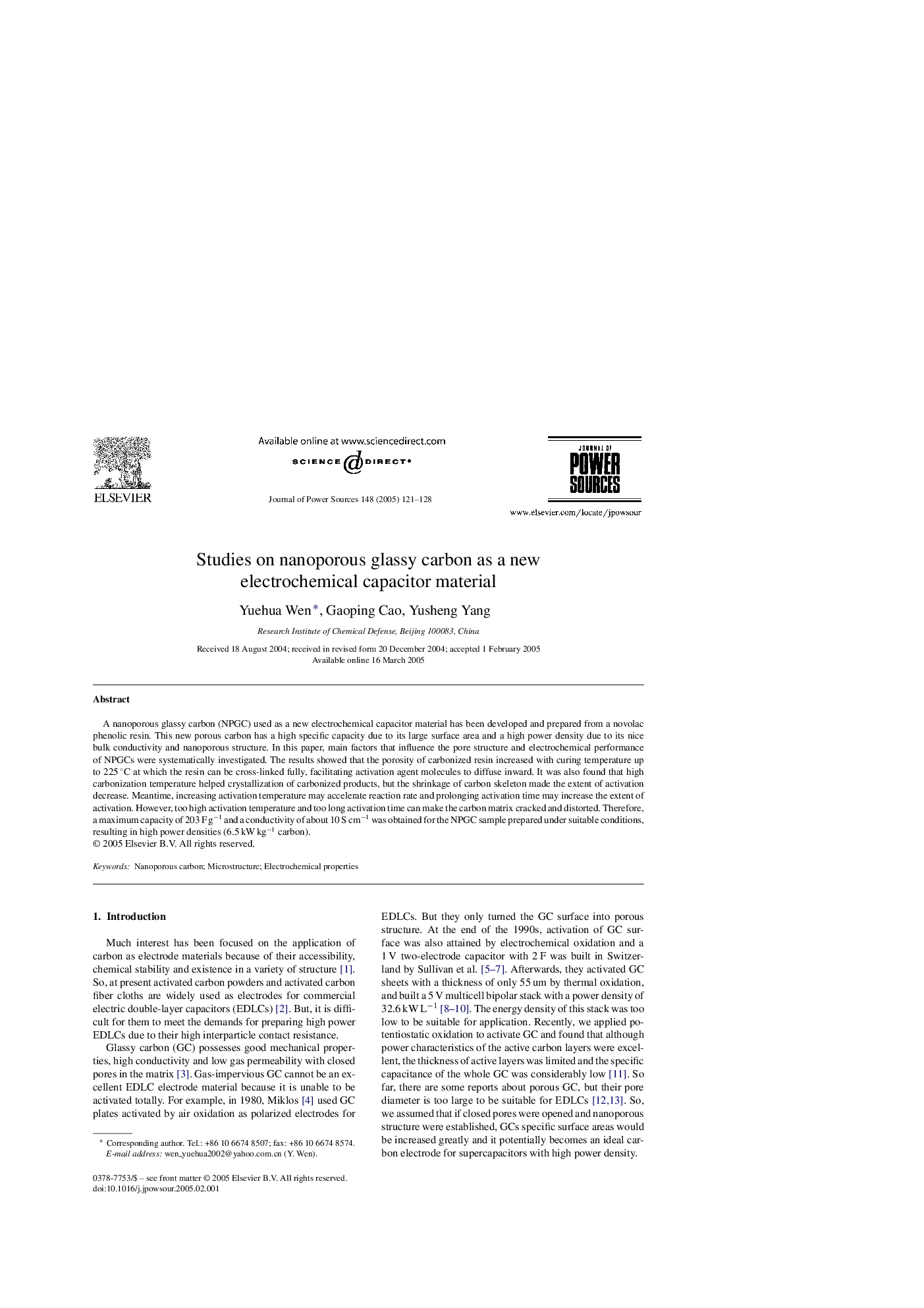| Article ID | Journal | Published Year | Pages | File Type |
|---|---|---|---|---|
| 9760233 | Journal of Power Sources | 2005 | 8 Pages |
Abstract
A nanoporous glassy carbon (NPGC) used as a new electrochemical capacitor material has been developed and prepared from a novolac phenolic resin. This new porous carbon has a high specific capacity due to its large surface area and a high power density due to its nice bulk conductivity and nanoporous structure. In this paper, main factors that influence the pore structure and electrochemical performance of NPGCs were systematically investigated. The results showed that the porosity of carbonized resin increased with curing temperature up to 225 °C at which the resin can be cross-linked fully, facilitating activation agent molecules to diffuse inward. It was also found that high carbonization temperature helped crystallization of carbonized products, but the shrinkage of carbon skeleton made the extent of activation decrease. Meantime, increasing activation temperature may accelerate reaction rate and prolonging activation time may increase the extent of activation. However, too high activation temperature and too long activation time can make the carbon matrix cracked and distorted. Therefore, a maximum capacity of 203 F gâ1 and a conductivity of about 10 S cmâ1 was obtained for the NPGC sample prepared under suitable conditions, resulting in high power densities (6.5 kW kgâ1 carbon).
Related Topics
Physical Sciences and Engineering
Chemistry
Electrochemistry
Authors
Yuehua Wen, Gaoping Cao, Yusheng Yang,
